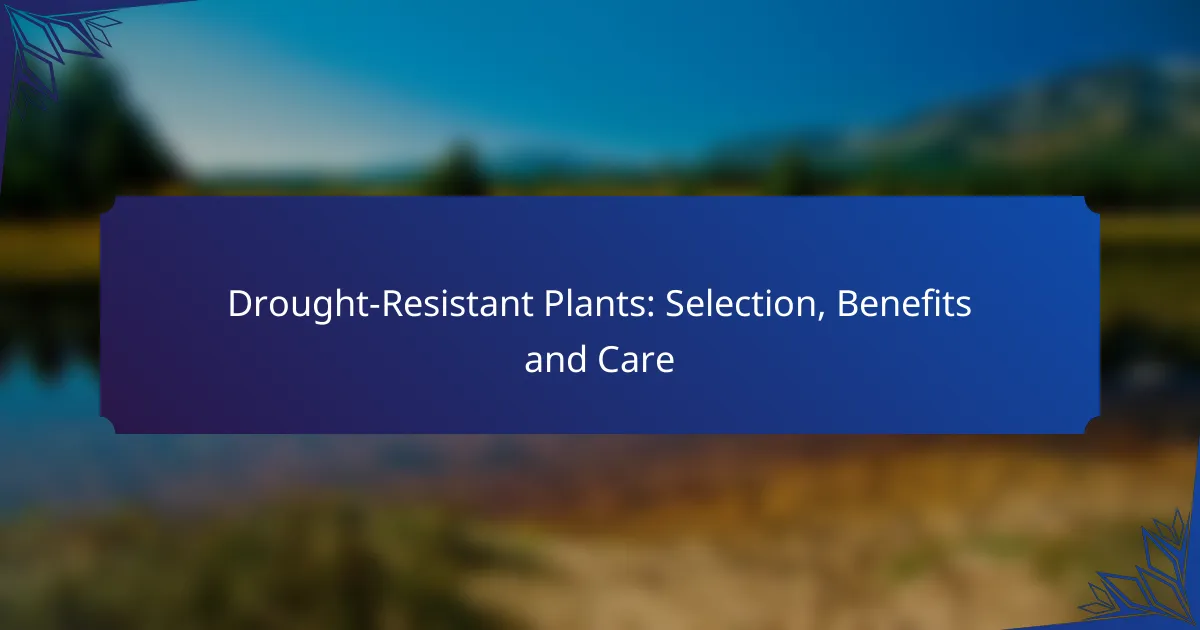Drought-resistant plants are an excellent choice for gardens in arid climates, offering a sustainable solution that conserves water and reduces maintenance. By selecting species such as succulents, native grasses, and ornamental shrubs, gardeners can create vibrant landscapes that thrive with minimal water. Proper care and soil preparation are essential to ensure these resilient plants flourish in low-water conditions.
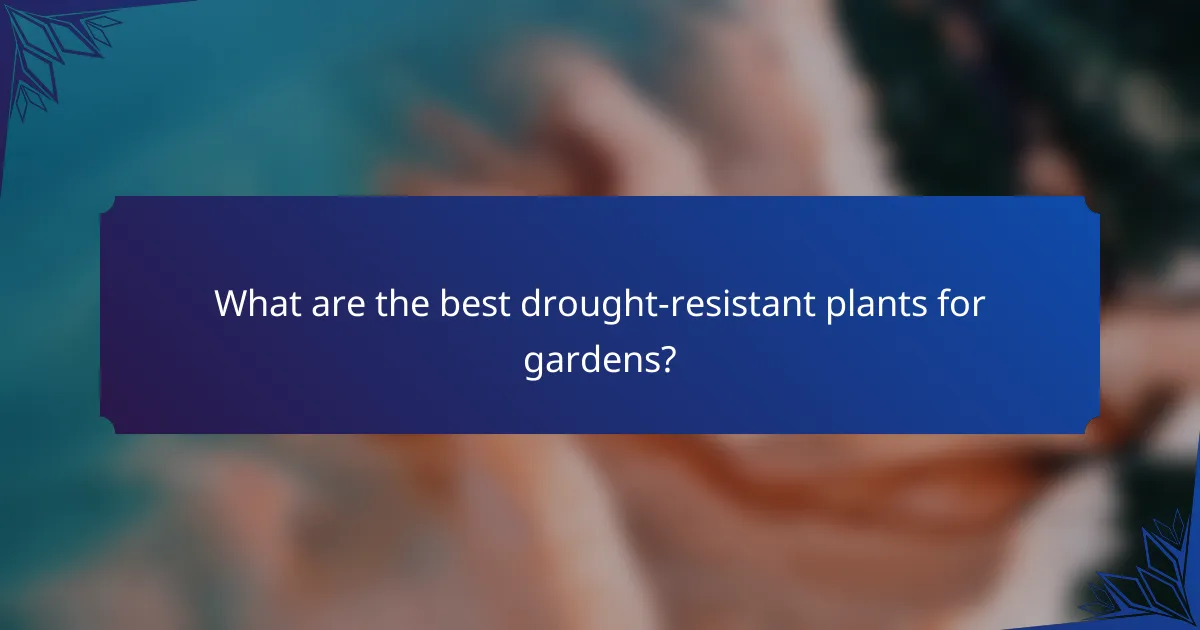
What are the best drought-resistant plants for gardens?
The best drought-resistant plants for gardens include succulents, native grasses, perennials, and ornamental shrubs. These plants are adapted to survive with minimal water, making them ideal for arid climates or low-water gardens.
Succulents like Agave and Aloe Vera
Succulents, such as Agave and Aloe Vera, are excellent choices for drought-resistant gardens due to their ability to store water in their leaves. They thrive in well-drained soil and require minimal watering once established.
When selecting succulents, consider their size and growth habits. Agave can grow quite large, while Aloe Vera typically remains smaller, making it suitable for container gardening. Ensure they receive plenty of sunlight for optimal growth.
Native grasses such as Blue Grama and Buffalo Grass
Native grasses like Blue Grama and Buffalo Grass are well-suited for drought-prone areas as they are adapted to local climates. These grasses require less water than traditional lawn grasses and can withstand dry conditions.
Incorporating native grasses into your landscape can reduce maintenance efforts. They typically need mowing less frequently and can provide habitat for local wildlife. Aim to plant them in areas with good drainage to prevent root rot.
Perennials like Lavender and Sedum
Perennials such as Lavender and Sedum are not only drought-resistant but also add beauty and fragrance to gardens. Lavender thrives in well-drained soil and full sun, while Sedum is known for its low maintenance and diverse forms.
These plants can be used in borders or as ground cover. When planting, space them adequately to allow for air circulation, which helps prevent fungal diseases. Regular deadheading can encourage more blooms in Lavender.
Ornamental shrubs including Juniper and Sage
Ornamental shrubs like Juniper and Sage are ideal for adding structure to drought-resistant gardens. Juniper is particularly hardy and can tolerate poor soil conditions, while Sage offers aromatic foliage and attractive flowers.
When choosing shrubs, consider their mature size and growth rate. Junipers can vary from low ground covers to tall specimens, making them versatile for different garden designs. Ensure proper spacing to allow for air flow and prevent overcrowding.

How do drought-resistant plants benefit your garden?
Drought-resistant plants significantly enhance your garden by conserving water, reducing maintenance efforts, and improving soil health. These plants are adapted to thrive in low-water conditions, making them ideal for sustainable gardening practices.
Reduced water consumption
Drought-resistant plants require less water compared to traditional varieties, which is crucial in areas prone to water scarcity. By selecting these plants, you can cut down on irrigation needs, often by 30-50%, depending on the species and local climate.
To maximize water efficiency, group drought-tolerant plants together in your garden. This allows for targeted watering and minimizes evaporation losses, ensuring that your plants receive the moisture they need without excessive waste.
Lower maintenance requirements
These plants typically demand less upkeep, saving you time and effort in your gardening routine. Drought-resistant varieties are often more resilient to pests and diseases, which means fewer interventions and treatments are necessary.
Consider incorporating native drought-resistant plants, as they are well-adapted to local conditions and often require minimal care once established. This can lead to a more sustainable garden that thrives with less human intervention.
Enhanced soil health
Drought-resistant plants contribute positively to soil health by promoting biodiversity and improving soil structure. Their deep root systems help aerate the soil and enhance its ability to retain moisture and nutrients.
Additionally, these plants can reduce soil erosion, especially in dry regions. By covering the ground with vegetation, they protect the soil from harsh weather and help maintain its integrity over time.
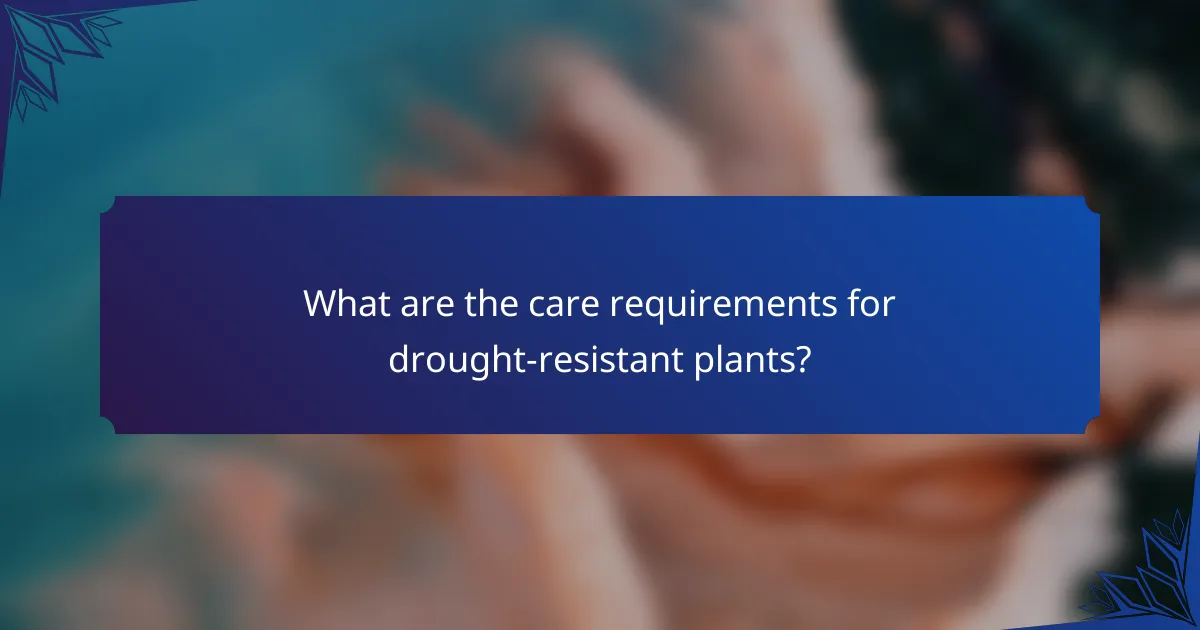
What are the care requirements for drought-resistant plants?
Drought-resistant plants require specific care to thrive in low-water conditions. Key factors include proper soil preparation, effective watering techniques during establishment, and appropriate fertilization to support growth.
Soil preparation and drainage
Proper soil preparation is crucial for drought-resistant plants as it enhances drainage and root development. Aim for well-draining soil, which can be achieved by mixing organic matter, such as compost, into the existing soil to improve aeration and moisture retention.
Consider testing your soil’s pH and nutrient levels before planting. Most drought-resistant plants prefer slightly acidic to neutral soil (pH 6.0-7.0). Adjustments can be made using lime or sulfur as needed.
Watering techniques for establishment
During the establishment phase, it’s essential to water drought-resistant plants adequately to help them develop strong roots. Water deeply but infrequently, allowing the soil to dry out between watering sessions. This encourages roots to grow deeper in search of moisture.
For newly planted specimens, aim for about 1-2 inches of water per week, either through rainfall or supplemental irrigation. Once established, many drought-resistant plants can thrive on minimal watering, often requiring only occasional deep watering during prolonged dry spells.
Fertilization needs
Drought-resistant plants generally require less fertilization compared to traditional plants. Over-fertilizing can lead to excessive foliage growth at the expense of root development, making them more susceptible to drought stress.
Use a slow-release fertilizer with a balanced nutrient ratio, applying it sparingly during the growing season. A general guideline is to fertilize once in early spring and possibly again mid-summer, depending on the plant’s growth and local soil conditions.
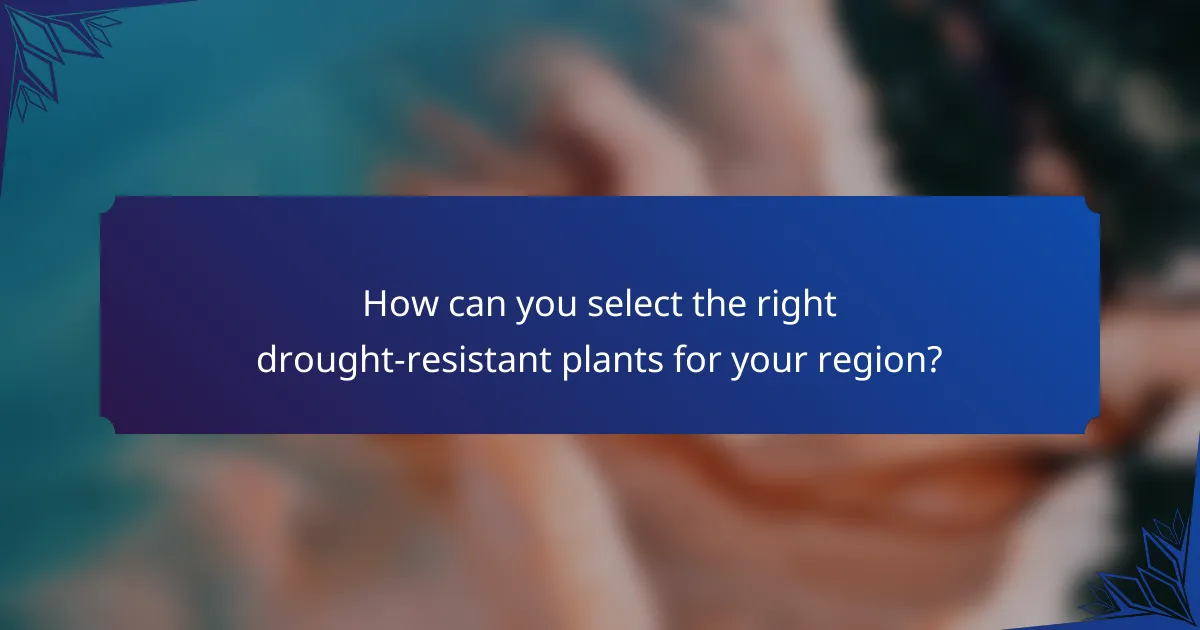
How can you select the right drought-resistant plants for your region?
Selecting the right drought-resistant plants involves understanding your local environment and choosing species that thrive in those conditions. Focus on climate, soil type, and native species to ensure successful growth and sustainability.
Consider local climate and soil conditions
Your local climate plays a crucial role in determining which drought-resistant plants will thrive. Factors such as temperature, rainfall patterns, and humidity levels should guide your selection process. For instance, arid regions may require plants that can withstand extreme heat and minimal water.
Soil conditions, including pH, drainage, and nutrient content, also significantly impact plant health. Conducting a soil test can help you understand these factors better and choose plants that are well-suited to your soil type, whether sandy, clay, or loamy.
Research native plant species
Native plants are often the best choice for drought resistance as they have adapted to local conditions over time. These species typically require less water and maintenance compared to non-native varieties. Look for local nurseries or extension services that can provide lists of native plants suitable for your area.
Incorporating native plants into your garden not only conserves water but also supports local wildlife, including pollinators. Examples of drought-resistant native plants include lavender, sage, and various succulents, depending on your region.
Evaluate plant hardiness zones
Plant hardiness zones indicate which plants can survive in specific temperature ranges, helping you select drought-resistant varieties that will thrive in your area. The USDA Plant Hardiness Zone Map is a valuable resource for identifying your zone and understanding the climate conditions that affect plant growth.
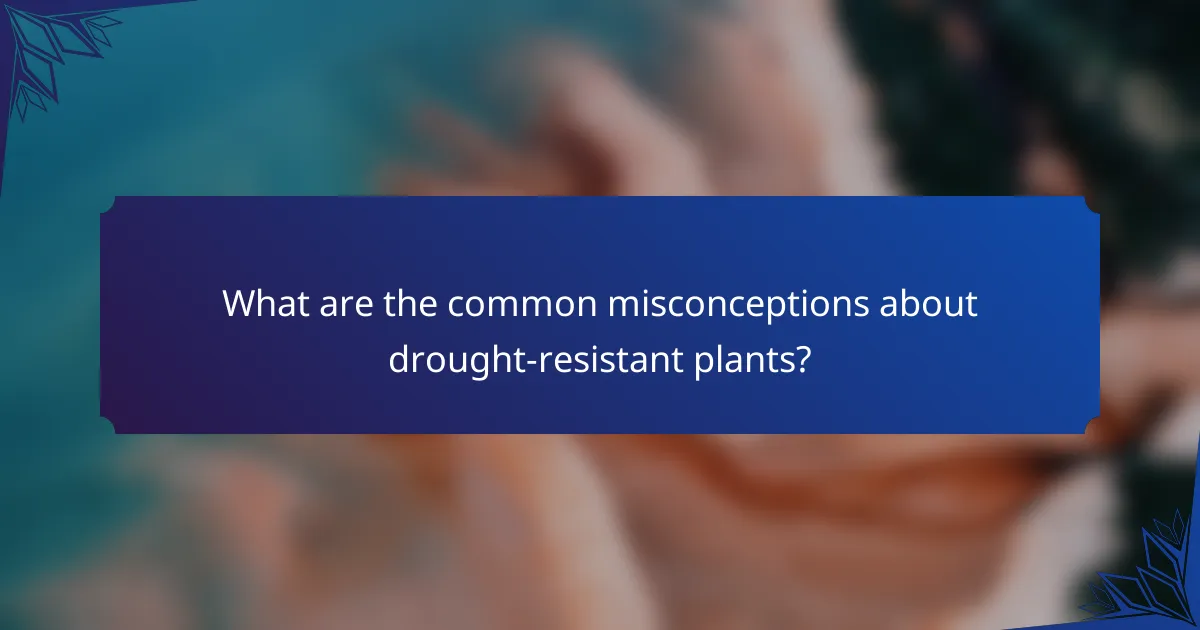
What are the common misconceptions about drought-resistant plants?
Drought-resistant plants are often misunderstood, leading to several misconceptions about their care and needs. Many people believe these plants can thrive without any water, which is not entirely accurate.
They don’t need any water
One of the most prevalent myths is that drought-resistant plants require no water at all. While these plants are adapted to survive in low-water conditions, they still need some moisture to establish roots and grow effectively.
During their initial growth phase, drought-resistant plants typically need regular watering to help them acclimate to their environment. Once established, they can tolerate longer dry spells, but occasional watering during prolonged droughts can enhance their health and longevity.
To ensure optimal growth, consider watering these plants deeply but infrequently. A good rule of thumb is to water them once every two to three weeks during dry periods, depending on the specific plant type and local climate conditions.
